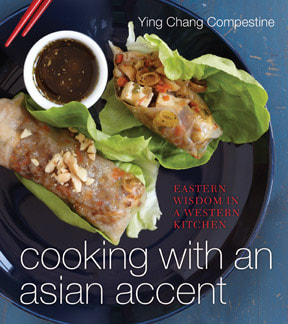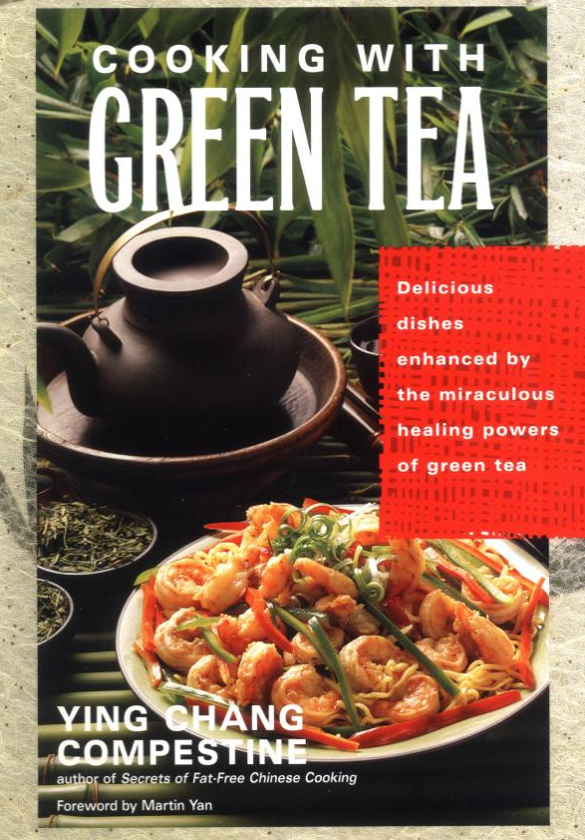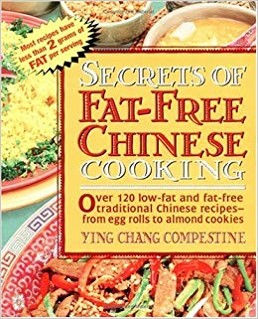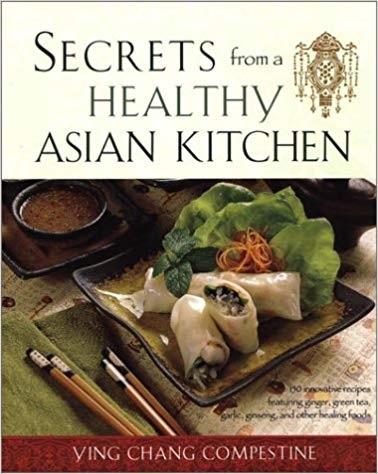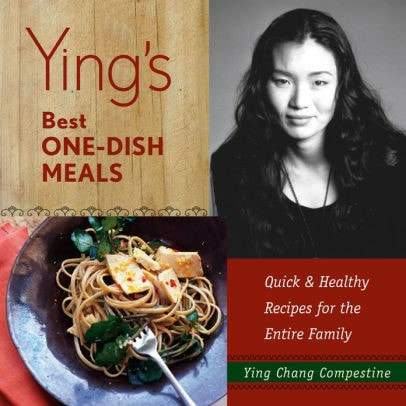How to move beyond sweet and sour pork
By Ying Chang Compestine
When I first arrived in this country in 1986 as a student from China, I had trouble adapting to the Western diet of my host families. At that time, Boulder, Colorado, had no restaurants that served authentic Asian dishes. This early hardship prompted my career as an author of three Asian cookbooks and many articles on healthy eating.
When my family moved to Lafayette three years ago, the flourishing Asian communities and wonderful restaurants within easy reach delighted me. It wasn’t long after we arrived that my new friends, who are longtime East Bay residents, began to ask me about finding good Chinese restaurants, often following up with more questions: How do I order the authentic dishes? How do I tell if the food is the absolute freshest? What is the best way to enjoy a Chinese meal?
Here are a few of my secrets:
First off, see if the restaurant will accommodate your requests.
Once, in a Colorado ski town, I was dining with friends at a Chinese restaurant. After I asked several questions about monosodium glutamate (MSG), the ingredients used, and the types of sauces on the dishes, the frustrated server finally blurted out, “You don’t understand! We don’t serve real Chinese food here!”
I’m sensitive to MSG and can always taste it in food. One quick test I’ve developed before tasting is to see how the server responds when I say, “No MSG?” Good restaurants don’t use it, and the server will say this right away. Or the server will happily accommodate your request not to use it. If the server acts as if everyone should want to eat MSG, then it’s time to show that you’re not “everyone.”
Make your request for fresh food.
A friend of mine from Shanghai once ate at a Chinese restaurant in the United States and, to his disgust, couldn’t tell what kind of meat he was being served because of the sodium- and sugar-laden sauce. By telling your server that you do not want chicken broth in your sauces or that you want less sugar and salt in your food, you will most likely require the chef to make a fresh sauce. Chefs sometimes use heavy sauces to cover up an ‘off’ taste. With a lighter sauce, it’s likely you won’t end up with less-than-fresh seafood or meat.
Is the restaurant popular with locals?
Yes, it’s true: You shouldn’t overlook restaurants that are out of the way yet filled with an ethnically diverse crowd. If that big corner table is surrounded by four generations of one Chinese family, that’s a very good sign. No Chinese husband would take his in-laws to a mediocre restaurant!
Does the restaurant also offer a Chinese-only menu?
This can be an excellent indication that the restaurant serves authentic dishes. You may wonder at the delights customers around you are enjoying, none of which seem to match what’s on your menu. Your server should be able to offer suggestions for dishes that may not be on the regular menu. Be sure to let your server know that you are interested in trying authentic recipes; otherwise, you might be guided to dishes that have been modified to accommodate Western tastes.
For a real adventure, play menu roulette: Pick a dish at random from the Chinese-only menu. My non-Asian husband ordered an excellent fish dish this way. It would be unfair to ask the server to translate the entire menu, but you can ask him or her to point out the section you’re interested in, such as seafood or vegetables, before you pick randomly, so that you won’t be surprised by roasted chicken feet.
Eat like the Chinese.
You may notice that soy, rice, noodles, and vegetables are the foundation of authentic Chinese meals. Meats or seafood are usually used to complement meals, not define them. Instead of being served as appetizers, soups are usually served at the end of the meal to help with digestion. Desserts are normally very light, such as pastries or steamed buns filled with sweet red bean filling, rice pudding, or a fruit plate.
In China, almost all important events occur around the dinner table. Eating well and enjoying the people around you are the essence of enjoying a Chinese meal.
For healthy diners.
By Ying Chang Compestine
When I first arrived in this country in 1986 as a student from China, I had trouble adapting to the Western diet of my host families. At that time, Boulder, Colorado, had no restaurants that served authentic Asian dishes. This early hardship prompted my career as an author of three Asian cookbooks and many articles on healthy eating.
When my family moved to Lafayette three years ago, the flourishing Asian communities and wonderful restaurants within easy reach delighted me. It wasn’t long after we arrived that my new friends, who are longtime East Bay residents, began to ask me about finding good Chinese restaurants, often following up with more questions: How do I order the authentic dishes? How do I tell if the food is the absolute freshest? What is the best way to enjoy a Chinese meal?
Here are a few of my secrets:
First off, see if the restaurant will accommodate your requests.
Once, in a Colorado ski town, I was dining with friends at a Chinese restaurant. After I asked several questions about monosodium glutamate (MSG), the ingredients used, and the types of sauces on the dishes, the frustrated server finally blurted out, “You don’t understand! We don’t serve real Chinese food here!”
I’m sensitive to MSG and can always taste it in food. One quick test I’ve developed before tasting is to see how the server responds when I say, “No MSG?” Good restaurants don’t use it, and the server will say this right away. Or the server will happily accommodate your request not to use it. If the server acts as if everyone should want to eat MSG, then it’s time to show that you’re not “everyone.”
Make your request for fresh food.
A friend of mine from Shanghai once ate at a Chinese restaurant in the United States and, to his disgust, couldn’t tell what kind of meat he was being served because of the sodium- and sugar-laden sauce. By telling your server that you do not want chicken broth in your sauces or that you want less sugar and salt in your food, you will most likely require the chef to make a fresh sauce. Chefs sometimes use heavy sauces to cover up an ‘off’ taste. With a lighter sauce, it’s likely you won’t end up with less-than-fresh seafood or meat.
Is the restaurant popular with locals?
Yes, it’s true: You shouldn’t overlook restaurants that are out of the way yet filled with an ethnically diverse crowd. If that big corner table is surrounded by four generations of one Chinese family, that’s a very good sign. No Chinese husband would take his in-laws to a mediocre restaurant!
Does the restaurant also offer a Chinese-only menu?
This can be an excellent indication that the restaurant serves authentic dishes. You may wonder at the delights customers around you are enjoying, none of which seem to match what’s on your menu. Your server should be able to offer suggestions for dishes that may not be on the regular menu. Be sure to let your server know that you are interested in trying authentic recipes; otherwise, you might be guided to dishes that have been modified to accommodate Western tastes.
For a real adventure, play menu roulette: Pick a dish at random from the Chinese-only menu. My non-Asian husband ordered an excellent fish dish this way. It would be unfair to ask the server to translate the entire menu, but you can ask him or her to point out the section you’re interested in, such as seafood or vegetables, before you pick randomly, so that you won’t be surprised by roasted chicken feet.
Eat like the Chinese.
You may notice that soy, rice, noodles, and vegetables are the foundation of authentic Chinese meals. Meats or seafood are usually used to complement meals, not define them. Instead of being served as appetizers, soups are usually served at the end of the meal to help with digestion. Desserts are normally very light, such as pastries or steamed buns filled with sweet red bean filling, rice pudding, or a fruit plate.
In China, almost all important events occur around the dinner table. Eating well and enjoying the people around you are the essence of enjoying a Chinese meal.
For healthy diners.
- Avoid ordering deep-fried foods, such as dumplings, wontons, and crispy noodles. Instead, order the steamed dumplings and wontons, and stir-fried noodles or noodle soup.
- Ask for white meat. White meat is much lower in unhealthy fats than dark meat.
- Avoid duck. Duck is very high in fat and is usually grilled with so much oil that it pools on the plate.
- Drink tea. Drink tea instead of alcoholic and nonalcoholic beverages, which are high in empty calories.
Ying’s List of Authentic Chinese Restaurants in the 92
Tin’s Teahouse, 1829 Mt. Diablo Blvd., Walnut Creek, (925) 287-8288. Dim sum, lunch, and dinner daily.
Tin’s Teahouse has waitstaff walking around with carts of food during the dim sum hours (Mon.- Fri. 11-3, Sat.-Sun. 10-3). This means that if you see something you like, you can ask for it immediately. Otherwise, you can always order from the huge menu, which offers a nice mix of high-quality authentic Chinese food as well as fusion dishes.
Three Brothers from China, 2001 Contra Costa Blvd., Pleasant Hill, (925) 671-6888; 2211 San Ramon Valley Blvd., Ste. H, San Ramon, (925) 838-9600;www.threebrothersfromchina.com.
Lunch and dinner daily. Three brothers from China opened these homey restaurants, just as the name implies. Reserve a table for large groups, because the restaurants are often full. The food here is guaranteed to be authentic and fresh.
Uncle Yu’s, 999 Oak Hill Rd., Lafayette, (925) 283-1688, www.uncleyu.com ; Uncle Yu’s at the Vineyard, 39 S. Livermore Ave., Livermore, (925) 449-7000, www.uncleyuthevineyard.com.
Lunch and dinner daily. Uncle Yu’s has long relied on high-quality, fresh, even seasonal, ingredients. Although some of the dishes could be described as East-West fusion, more purely Chinese dishes are available.
Shanghai Gourmet, 1291 Parkside Dr., Walnut Creek, (925) 256-6869.
Lunch and dinner daily. This restaurant is small but popular within the Chinese community. Photos accompany many of the dishes listed on the menu, so you can get a good idea of what you’re ordering. For an ultra-authentic experience, ask to order off the “Chinese” menu, which is in Chinese and English.
Tin’s Teahouse has waitstaff walking around with carts of food during the dim sum hours (Mon.- Fri. 11-3, Sat.-Sun. 10-3). This means that if you see something you like, you can ask for it immediately. Otherwise, you can always order from the huge menu, which offers a nice mix of high-quality authentic Chinese food as well as fusion dishes.
Three Brothers from China, 2001 Contra Costa Blvd., Pleasant Hill, (925) 671-6888; 2211 San Ramon Valley Blvd., Ste. H, San Ramon, (925) 838-9600;www.threebrothersfromchina.com.
Lunch and dinner daily. Three brothers from China opened these homey restaurants, just as the name implies. Reserve a table for large groups, because the restaurants are often full. The food here is guaranteed to be authentic and fresh.
Uncle Yu’s, 999 Oak Hill Rd., Lafayette, (925) 283-1688, www.uncleyu.com ; Uncle Yu’s at the Vineyard, 39 S. Livermore Ave., Livermore, (925) 449-7000, www.uncleyuthevineyard.com.
Lunch and dinner daily. Uncle Yu’s has long relied on high-quality, fresh, even seasonal, ingredients. Although some of the dishes could be described as East-West fusion, more purely Chinese dishes are available.
Shanghai Gourmet, 1291 Parkside Dr., Walnut Creek, (925) 256-6869.
Lunch and dinner daily. This restaurant is small but popular within the Chinese community. Photos accompany many of the dishes listed on the menu, so you can get a good idea of what you’re ordering. For an ultra-authentic experience, ask to order off the “Chinese” menu, which is in Chinese and English.


